An unexpected guest arrived on my cheek last week – a giant pimple. But this time, it was more than just your ordinary pimple.
The skin under the pimple felt hard and there was a large bump. The size of the bump was larger than the actual pimple. I felt some pain in the area. What was going on?
A massive ball of inflammation, sebum, and dead skin had blown up inside the follicle (pore), creating a cystic type of pimple.
Today’s article is about treating a cyst and understanding why it forms in the first place. If you understand why it happens, you can take steps to minimize flareups.
My Skin History
Here’s a bit of background on my skin to help you understand this case study.
I have a normal skin type that rarely breaks out. But occasionally, I do get a pimple if my skin is clogged up due to a product (a reaction to ingredients in it) or a mixture of humidity and overly emollient skincare (products that are too rich for the weather conditions). I don’t have hormonal acne. My pimples are largely driven by products or sometimes stress. My pores are small, so when a pore gets clogged or irritated, it doesn’t take much for it to blow up.
My routine had not changed much recently. I was not using overly rich products or any new products. I was also not especially stressed. So there was no obvious culprit as to why this pimple suddenly appeared.
But what’s interesting is that the location of this pimple was in the exact same spot as another cystic pimple that appeared on the opposite cheek last year. So two identical cystic pimples in symmetrical locations. That’s useful information, a clue hormones are involved.
The appearance of this large, hard bump is a new phenomenon for me. My pimples were never cystic until a year ago. This development, as well as the location of these pimples, tells me something about myself.
I am aging! Of course, I already knew that, but this is a not-so-subtle reminder. What I have is a classic case of adult hormonal acne. The kind that develops with changing hormone levels.
The Effect Of Hormones On Skin
Hormone levels can change by a variety of factors. One is aging. Starting around the late 30’s/early 40’s, the levels of estrogen and progesterone in women start to decline. The effect of testosterone (a “male” hormone, also known as an androgen) becomes stronger relative to estrogen and progesterone. The balance of hormones tips.
Testosterone turns on the sebaceous gland, which looks like a “sac” attached to every follicle (pore). This is where oil (sebum) is produced. The oil flows from the sebaceous gland into the pore. In clear skin, the oil flows out of the pore and onto the surface of skin. In acne-prone skin, the oil accumulates and gets stuck inside the pore, along with bacteria, dead skin cells, and other debris. The sebum solidifies, creating what is known as an impaction.
One of the hallmarks of acne is over-active sebaceous glands, which produce an excess amount of sebum. When you have too much oil inside a pore, and it gets stuck in there (especially if the oil is more sticky than average), a type of bacteria known as P. acnes bacteria proliferate. They feed on sebum. It’s their only food source.
After they munch on sebum, they excrete waste products (fatty acids) which irritate the pore walls. If they multiply enough (and they do inside a clogged pore where oxygen can’t reach them), an inflammatory reaction causes pus to fill up inside the pore, and a pustule (fluid-filled bump) is born. A cyst is an even larger swelling (what you see as a large bump). If the inflammation is severe, the pore wall ruptures and the contents of that cyst spill into the dermis, sending immune cells to the site to begin the repair process. The bump gets even bigger. This inflammatory reaction leads to the scarring that is common with cystic acne.
P. acnes bacteria can’t live in the presence of oxygen. When a pore is clear (no clog), oxygen can flow in and out of the pore, making it impossible for P. acnes to survive. When there is a clog, oxygen can’t get inside the pore, and P. acnes is free to feast away and reproduce. Benzoyl Peroxide, a common anti-bacterial ingredient, works by releasing oxygen inside pores, which eliminates bacteria.
Everyone has P. acnes bacteria on their skin (and many other microorganisms), but they’re kept under control when pores are clear.
What Caused My Cyst?
Since I do not have a history of acne, and because my routine did not radically change, I concluded the breakout was due to a combination of three factors:
1. Hormone Effect – Testosterone exerting a stronger force in my skin due to declining estrogen and progesterone levels. This is actually consistent with what I have been observing on my face recently – a loss of firmness. Declining estrogen leads to a loss of facial volume and elasticity. (See this recent post on firming and sagging skin.) Other causes of hormone changes, such as the monthly menstrual cycle, pregnancy, menopause, and medications, can also raise testosterone.
2. An Overwhelmed Follicle – A follicle is the more correct term for a pore. I use both terms interchangeably in this article and on this site. The follicle where my pimple erupted was already clogged initially. Ordinarily, this clog (a microcomedone) would go unnoticed. Our skin is filled with microcomedones that we can’t see. Some of those microcomedones become comedones (blackheads and whiteheads). And some of those go on to become papules (bumps with no fluid) or pustules (bumps with fluid). If there is severe inflammation, those clogged follicles can turn cystic.
3. An Irritant Reaction – Perhaps an ingredient in one of my products irritated the follicle. This would set off a minor inflammatory reaction. In a clear follicle, maybe nothing would happen. In a follicle that’s clogged, the inflammatory reaction would be intensified. (Remember all that bacteria is excreting waste that irritates the follicle too.) Add to that my small pore size, and the follicle ruptured.
Somehow, the balance tipped for that one particular follicle that ruptured. The clog got too big, and an external source of irritation made it worse. A massive inflammatory reaction ensued.
Acne Scarring
One pimple doesn’t bother me. It heals and goes away eventually.
What I’m worried about is acne scarring. I am an East Asian with Fitzpatrick Skin Type 3. Skin of color, especially Asian, Black, Hispanic skin, or multi-ethnic skin respond strongly to inflammation. This can make skin easily scar or pigment (post-inflammatory hyperpigmentation). Fitz 4-6 are most vulnerable to both PIH and scarring, but some Fitz 3’s are too, especially if they have a multi-racial background (e.g. a fair-skinned person with one black parent and one white parent).
Acne scars can take different forms. Cystic acne can lead to a loss of skin tissue – depressions in skin, such as pitting or thin ice pick scars. Or it can form thick scar tissue. An acne scar can also show a change in color, typically a spot that’s darker than the natural skin color.
In my case, an inflamed pimple always leaves a dark spot on my skin. It starts off red, then becomes dark red, and eventually brown. Sometimes it fades after a long time. Sometimes it doesn’t.
What To Do Once You Get A Cyst
Unfortunately, once a cyst forms, it is largely out of your hands. The inflammation that caused the cyst to form in the first place is in full motion. Without something strong to bring it down, such as a cortisone shot (administered by a doctor), you will have to let it run its course.
Treating a cyst is hard, but there are a few things you can do to reduce the inflammation and speed up healing. These are steps that I took for my situation:
1. Calming and soothing serum
As soon as I saw the pimple growing into a hard bump, I knew this was not a typical pimple, and the inflammation was acute. My immediate first step was to halt the inflammation – not allow it to amplify. I applied a calming serum to the area (both on the cyst and the surrounding skin). You want to go beyond the area of infection in order to nip any potential for spreading.
It is good to have a calming serum on hand for situations like these, even if you don’t normally need to calm or soothe your skin. I like buying products for sensitive skin for this reason. Although my skin isn’t sensitive, like all people, it is susceptible to irritation.
Try to find a calming serum before you need it. While you’re experiencing an active cyst is not the time to experiment with new products. You should find a product that you already know won’t irritate your skin – something proven to work on your skin. It’s ironic, but some calming serums do the exact opposite if you’re sensitive to an ingredient in it. I’ve seen this happen plenty of times, including on myself.
Dermalogica Ultracalming Serum Concentrate happens to work well on me. My skin responds to the combination of ingredients in it. Another great calming serum is Boscia Cool Blue Hydration Essence, which has Sea Whip, a powerful anti-inflammatory ingredient.
You can also obtain calming ingredients through a toner. I like Dermalogica Ultracalming Mist and Meg 21 Moisturizing Toner. Both are gentle hydrating toners with the added benefit of calming ingredients.
For the toner step of my routine, I sprayed the calming mist all over my face, and then I applied the calming serum to my affected area.
2. Cold water compress or ice
In the first few days, you can apply a cold compress or ice cube wrapped in a cloth to the area (don’t put the ice cube directly onto skin). Cold will reduce the temperature of skin, helping to bring down the heat inside that infected follicle. This in turn will slow down the inflammation.
3. Red LED light tool (if you happen to have one)
Red LED light therapy is great for reducing inflammation. It calms skin and takes down redness right away. It also speeds up wound healing.
I shone my Lightstim Red LED tool on my cheek for a few minutes, several times a day. Ordinarily, when I use this tool, it’s just once a day for about 15 minutes total (over the whole face).
4. AHA or BHA cleanser
I don’t use an exfoliating cleanser every day (because I don’t need to). My typical pattern is to use an AHA or BHA cleanser once every other day.
But in this situation, I ramped it up to daily. The appearance of the cyst is a sign that my skin has microcomedones in danger of progressing to something more serious (pimples). Hence the ramp up to daily.
You can use an exfoliating cleanser twice a day if your exfoliating cleanser is gentle and the manufacturer’s instructions say it is ok. Many are drying for non-oily skin and should not be used more than once a day.
Why not use an exfoliating serum at this point in time? Because a cleanser is more gentle. A serum is concentrated, and if your skin is badly inflamed, as in the case of an active cyst at its peak, it may irritate it. On my skin, it does. Yours might not. A cleanser is on skin for less time, but it can still lightly loosen some of the dead skin buildup on the surface of skin. This provides relief to microcomedones. When the cyst is over its peak and healing (e.g. it’s not bright red and it’s shrinking/getting flatter), you can switch to an exfoliating treatment serum.
If you choose a BHA cleanser, it will also exfoliate inside the pore – both break up the clog and loosen the lining of the pore. (The pore wall is lined with skin cells too!) Salicylic Acid, the main active ingredient found in BHA cleansers, also has anti-inflammatory and anti-bacterial properties.
I have a number of AHA and BHA cleansers. In this situation, I chose iS Clinical Cleansing Complex because it is very gentle and non-drying.
5. Benzoyl Peroxide spot treatment
Benzoyl Peroxide (BP) kills acne bacteria by releasing oxygen inside the pore. It is not the only way to kill bacteria, but I find that this ingredient gets the job done the fastest and most efficiently on me. And that is the most important criteria when my skin is in a time of crisis like this. My goal was to kill any residual bacteria lurking in the pore – to halt the inflammation cycle as quickly as possible.
I applied this at night (and only at night) because BP oxidizes in sunlight. Oxidized sebum inside a pore (which is hardened sebum) causes clogging. So it’s not good to use it in the daytime. Also be aware that BP is helpful only when you need it. But chronic, long-term use or overuse can hurt skin in the long run.
There are many BP treatments on the market. BP is like a commodity. A drugstore or generic (private label) brand will do. There’s no need to buy an expensive BP spot treatment unless that spot treatment happens to work very well at clearing your breakouts. The more expensive BP treatments tout other ingredients that control oil or inflammation. However, I have noticed very little difference between my drugstore brand and those expensive brands. The action of BP is very simple – release oxygen into the pore and wait for the bacteria to die. That’s all you need from BP. I use Oxy 5 (5% BP).
A 5% BP concentration is more than enough. In fact, a 2.5% amount is sufficient. Studies have shown no increasing benefit from using more than 5%.
I like to apply a big drop of BP over an active lesion. The directions always tell you to rub it in. But I find that covering it so that it dries and cakes over the area is more effective (this is basically smothering the bacteria inside – you want them to die faster!). Obviously, if it dries as a white spot, it looks obvious to others. Another reason not to apply it in the daytime. Since you are applying it at night, it doesn’t matter.
Alternatively, you could get BP through a BP cleanser. But a BP cleanser is really intended for acneic or very oily skin. If you are neither, a spot treatment is better for you and the more appropriate cleanser would be an AHA or BHA cleanser. The best place to look for a BP cleanser is in professional skincare lines. Vivant, PCA Skin, and GlymedPlus are just a few.
In summary, a few reminders about Benzoyl Peroxide. BP is an oxidizing agent. In plain English, it means it generates free radicals inside skin. Therefore, it should:
- not be overused – because it can irritate and damage skin long term. Also, after about 2 months of continuous use, it ceases to be as effective.
- not be used in high concentrations – 5% is more than enough. 2.5% is sufficient. More than 5% is excessive. You will find both prescription and non-prescription products in strengths higher than 5%. This does not make it better or safer.
- not be used in the daytime
- not be used in combination with Tretinoin (Retin-A)
6. Sulfur spot treatment
Sulfur kills bacteria too. This and Benzoyl Peroxide are the two main anti-bacterial agents in acne products.
Some people respond better to Sulfur than to Benzoyl Peroxide. You’ll have to experiment with both to see which one your skin prefers. I use both.
Mario Badescu’s Drying Lotion is a Sulfur treatment that works well on me. I like to cake it on, for the same reason as I cake on BP above. There are similar treatments by other brands (e.g. Kate Somerville and Indie Lee).
7. Silicone scar gel or scar sheets (if needed)
Once my pimple had healed after about 5 days – shrunk in size and the opening closed (important) – I began using a silicone scar treatment to prevent scar tissue from forming.
My skin has a tendency to develop thick scar tissue after a wound. Scar tissue looks different from normal, healthy skin. It’s tough, thick, and often a different color. It can become raised, especially in skin of color. While the cyst was healing, I could see scar tissue forming. This told me that my scar would not heal as a depression in skin, but as thickened tissue instead.
I used ScarGuard silicone gel which was very successful for me when I had a burn scar on my hand. Scarguard is 12% silicones with some anti-inflammatory ingredients, including hydrocortisone. The silicone ingredients keep the scar tissue from growing.
During the daytime, I also put a small piece of silicone scar sheet over the cyst to block sunlight. As a cyst is healing, it is also starting to pigment (more on this next). So it’s critical to prevent UV light from stimulating more pigmentation.
Scar sheets come packaged in large sheets. You can cut these up into different sizes and shapes. I pre-cut a bunch of tiny squares, about 1 cm x 1 cm. It’s convenient having these pre-cut scar sheets on hand. They can be re-used, i.e. you can remove and put it back on skin several times. I usually use 1 pre-cut piece a day.
If you don’t have scar sheets, or you don’t need them (because you don’t develop thick scars), then another way to protect a healing cyst from sunlight is to use a band-aid. Band-aid’s come in small sizes too, or just cut up a large band-aid. Lightly cover the area (not tightly sealed) so that air can flow through. Obviously, this is only practical if you have one or two pimples, and you don’t expect to see many people.
If you have multiple healing cysts, make sure you apply sun protection (you should be doing this anyway). A sunscreen with Zinc Oxide is best, since Zinc Oxide is anti-inflammatory and soothing.
8. Brightening serums
The healing cyst was and still is red. This red color will eventually darken, turning into a post-inflammatory hyperpigmented (PIH) spot. It’s already less red than before (a dark reddish brown now).
Melanin (the pigment that confers color) is produced as a result of inflammation. It happens very easily on Fitzpatrick types 3-6. The earlier you stop the melanin from being produced, the better. My goal is to mitigate this unfortunate side effect ASAP.
When the size of my cyst started to shrink and get darker (after the peak), I began using non-hydroquinone brightening treatments to inhibit melanogenesis (the process of melanin production). These brightening ingredients inhibit different steps of this long, complex process. A brightening treatment can also help de-pigment the area faster (by increasing the rate of shedding).
I am using Lira Clinical Lite Serum in the AM and iS Clinical White Lightening Serum in the PM. Both work well on me. Lira’s Lite Serum feels soothing and very hydrating, and can be used post-procedure (that’s how gentle it is). I use iS Clinical White Lightening Serum at night because it provides intense exfoliation of pigment (but gently). Note that iS Clinical has another product called White Lightening Complex, which is also great (not exfoliating like the White Lightening Serum and can be used in the AM).
Tips To Prevent Cysts From Forming
A cyst is a manifestation of full blown infection and inflammation in the skin. At this point in time, immune cells are already at the area trying to deal with the “wound.” Because the inflammatory reaction is so intense (and largely out of your control once it happens), the best thing you can do is aggressively prevent situations where this can happen.
This involves using the right acne management products for your skin and following certain habits. I can’t discuss acne management products here because every skin has different needs. A suitable regimen will be different for each person. But a skin professional can help you determine what you need. If your acne is recurring (not an occasional occurrence like mine), then using professional acne products will be more effective. They’re generally stronger than retail products.
But here are some general tips:
1. Don’t pick or squeeze pimples.
This is by far the easiest way to set up your skin for failure. Picking or squeezing damages pore walls, making it even easier for skin to become inflamed. The whole reason why an acne scar forms is because the pore wall breaks, and everything that was in the clog spills out into the dermis, causing an acute immune response.
If you’re squeezing and picking, you’re aggravating an already strained pore and intensifying the inflammatory reaction that will ensue.
2. Use a gentle exfoliating product daily, such as a cleanser, toner, serum/essence, or exfoliating pad.
This applies if you are prone to breakouts. If you don’t have any trouble with breakouts or are not oily, you don’t necessarily need to use an exfoliating product daily. (This is a complicated topic which I don’t want to go into here, but am mentioning to caution you from potential over-exfoliation).
The key word is gentle. Find something that doesn’t dry out your skin.
If you’re using an exfoliating cleanser, use it after a cleansing oil. Make sure you do the Double Cleanse – this is really essential if you have breakouts. And even if you don’t have chronic acne, it’s the best way to keep your pores clear.
There are many types of exfoliating cleansers, using different combinations of AHA’s, BHA, or enzymes. There isn’t an ideal combination.
But I do want to call out attention to two AHA’s that don’t get mentioned much and are less common. Mandelic Acid is great for acne and clogged pores. It’s more gentle than Glycolic Acid (due to a larger size, which means it doesn’t penetrate as fast or deep), and it has anti-bacterial properties. Azelaic Acid is effective for acne too, with anti-inflammatory, anti-bacterial, and brightening activity.
Lactic Acid is also a good choice. You see this a lot. It’s more gentle than Glycolic Acid, plus hydrating and brightening too.
Many exfoliating products use a combination of several AHA’s (at least two).
3. Use a soothing or calming product daily, such as a calming mist/toner or serum.
If your daily routine contains anti-inflammatory ingredients, you stand a greater chance of keeping your skin in homeostasis (in a balanced state). It’ll be more stable and less likely to get irritated by the slightest disturbance.
Managing Acne Is A Long Process That Requires Patience
Treating a cyst is very hard. I wish it were easier. It’s difficult to control what Mother Nature bestows on us. Unless we’re on hormone therapy or contraceptive pills, we can’t change the action of hormones, except to mitigate some of the triggers.
What we can do is make our skin strong so that it is more resistant to inflammatory attacks. Keeping inflammation under control is one way. Maintaining a strong barrier is another (another hugely important topic that I didn’t have time to broach today). But also doing your part to keep pores clean and healthy (no picking!) is another.
Some people will still get breakouts, despite all their best efforts. This is when more aggressive intervention is needed. Perhaps a professional chemical peel done regularly, antibiotic drugs or prescription retinoids, or hormone therapy. A skin professional can help you figure out what you need to do differently in your routine and also give you some in-office treatments that will help decongest your skin. If you have many cysts, you should see a dermatologist.
Acne is a huge topic, and I can’t cover everything here. The goal of this article was to share my own experience with you to shed light on hormonal acne and some tips that might help you. I hope it helps you manage your acne better.

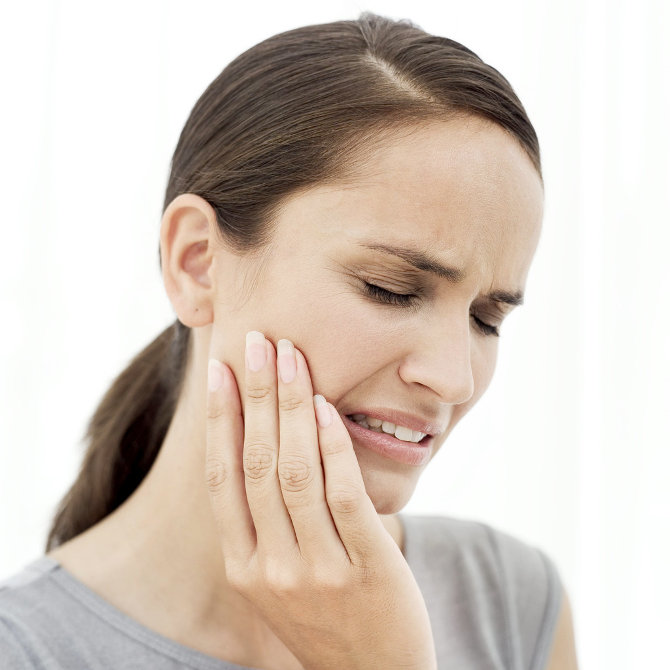
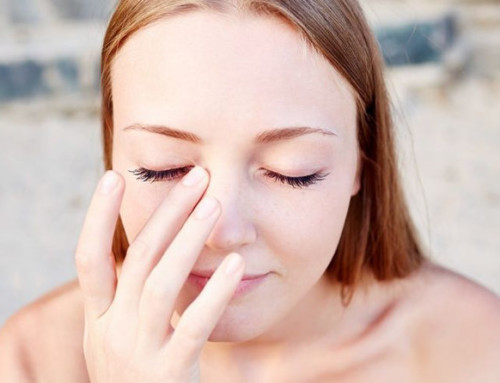
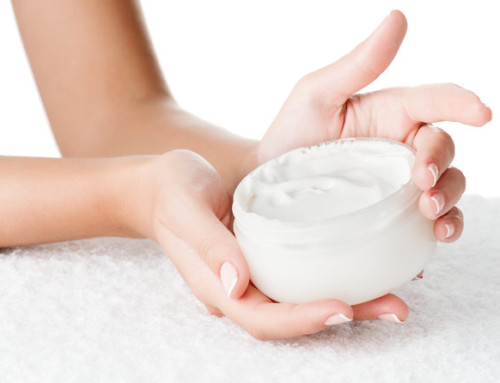


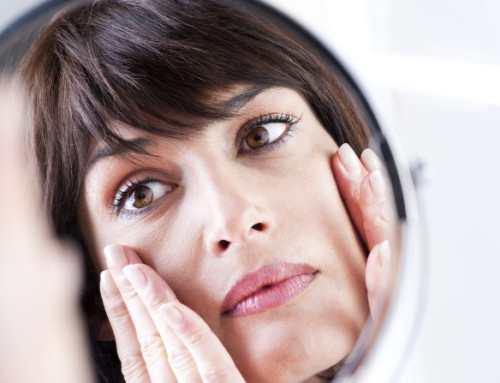
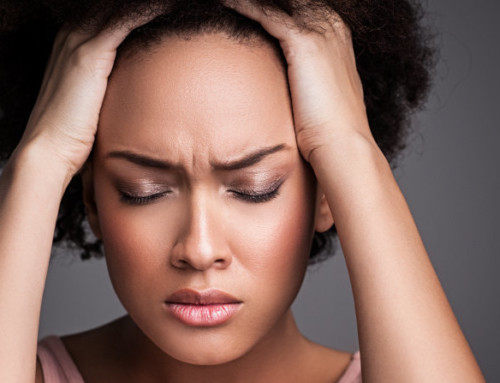
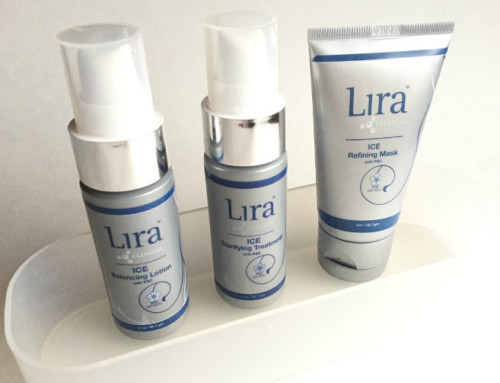
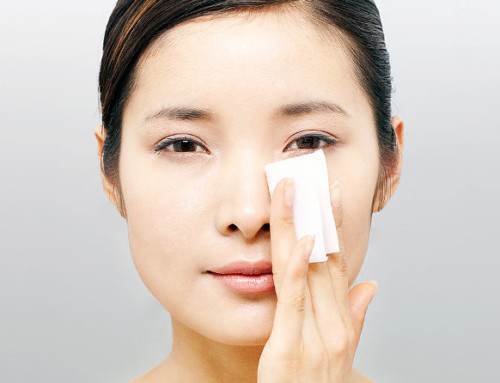
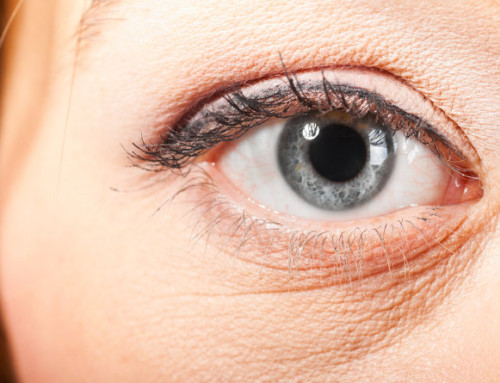
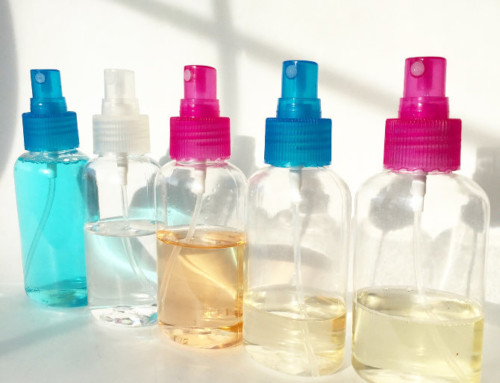
Thank you Rita for the detailed and instructive article, as always. What do you think about oral supplements such as Omega 3 and hylaronic acid tablets. Would you be interested in writing on this subject in the future?
Thank you for your suggestion Ayse. Omega 3 oral supplements are great for skin. I take fish oil myself and see a difference on my skin (more moist). Here’s a past post on Omega 3 fish oil. As for hyaluronic acid tablets, I have not taken them but I’d certainly be willing to write about it.
I’m fair (white) with rosacea or rosacea-like skin (red undertones constantly showing). I have been dealing with adult acne for around 4 years and the effects of its pigmentation (all acne leaves red marks on me as well). I use a salacytic acid wash, glycolic acid toner, and alternate between vit C (Ole Henrikson Truth serum) and lactic acid serum (Sunday Riley Good Genes). If using vit C I use my Aczone treatment. PM is natural cleanser (tata harper), BHA 2% toner, aczone, and then Sunday Riley Luna oil. With all this, I really feel like I should be getting somewhere with the pigmentation. Although the acne has definition calmed down I feel like the marks have made no improvement. If this is the case, do you recommend using a light therapy (red as you have suggested)? Obviously an expensive treatment to buy but I’m not really sure what else to do!
Hello Mims, I can appreciate your challenge trying to improve the red marks from acne. I would not recommend buying a red LED tool just for that. As you say, it is an expensive purchase. This the kind of tool that provides longer-term benefits (gradual changes). I happened to already have a red LED tool, which is why I put it to use for the cystic pimple. But my primary use of light therapy (on myself) is to prevent wrinkles. A better investment in your case would be in a brightening treatment (preferably serum rather than moisturizer). Although the Ole C and Good Genes help with brightening, a dedicated brightening treatment with a blend of brightening ingredients can do more to inhibit pigment production. Some of the commonly used brightening ingredients are also anti-inflammatory, which would help with the redness too.